Let me tell a story: At my worst trading moment, I lost 3 million in three days due to contract liquidation, leaving me heavily in debt and nearly facing ruin. However, the cryptocurrency space is so magical; by chance, I received guidance from a master. In a stormy night, I understood the true path of starting over to trade full-time, becoming a professional trader, diligently studying techniques, and spending thousands of days and nights researching and learning! Now I have reaped thousands! Although I haven't achieved the targets some have (like turning 10,000 into 20,000), I am very content, steady, and secure, dreaming of breaking 100 million by the end of this year, allowing me to earn more capital next year.
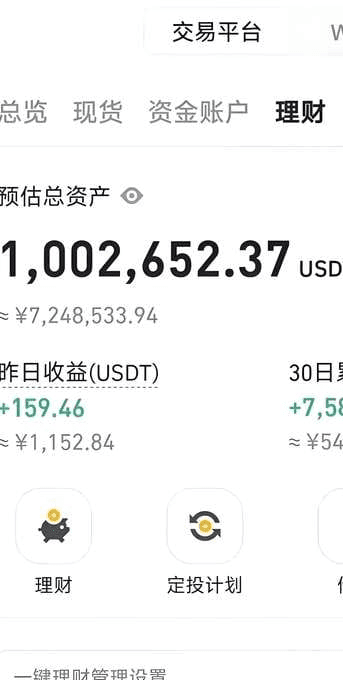
Now I will share my winning strategies and practical techniques for cryptocurrency trading:
1. Insight into market sentiment and emotion: Trading volume is an important window to observe the market. When trading volume significantly increases while prices do not decline, it often signals that the market is about to stabilize after falling; conversely, if trading volume increases but prices struggle to continue rising, it likely indicates that short-term trends have reached their end. It is essential to note that trading volume behaves differently during the processes of rising and falling. During a rising phase, trading volume should continue to grow steadily; if there is a sudden drop in trading volume or an exceptionally massive volume occurs, it may indicate that the upward trend is about to end. In a declining process, as long as a significant volume appears at key levels, the downward trend is likely to continue.
2. Focus on key levels: Resistance levels, support levels, and trend lines are crucial points that provide significant directional indicators for market trends. Whenever prices approach these levels, it is essential to pay special attention and take decisive action. Personally, I prefer to use the golden ratio method to predict these key levels to assist my trading decisions.
3. Seizing time windows: When observing trends, different time windows have different roles. A one-minute chart is suitable for precisely finding entry and exit points; a three-minute chart helps monitor the trend after entry; half-hour or hourly charts mainly observe changes in daily trends. By reasonably utilizing these time windows, one can grasp market dynamics more comprehensively and accurately.
4. Properly handle stop-loss: A stop-loss signifies the end of a trade; one should never act blindly due to eagerness to recover losses. Each new trade is a completely new beginning; do not let previous actions affect current judgments and decisions. Maintain calmness and rationality to better cope with various changes in the market.
5. Clever position management and trading strategies: This is a simple yet very effective method that beginners can easily grasp and profit from. We divide our positions into three equal parts. When the price successfully breaks above the 5-day moving average, buy one part; if it continues to break above the 15-day moving average, buy another part; if it further breaks above the 30-day moving average, buy the last part as well. The entire process must be strictly executed according to this rule. If the price breaks above the 5-day moving average but fails to continue to challenge the 15-day moving average and instead declines, maintain your position as long as it does not drop below the 5-day moving average; sell immediately if it does. Similarly, when the price breaks above the 15-day moving average but cannot continue to break above the 30-day moving average and pulls back, keep holding as long as it does not drop below the 15-day moving average; if it does, sell one part first. If the price successfully breaks above the 30-day moving average and then pulls back, operate according to the aforementioned method. During sell-offs, the operation is reversed. When the price is high and drops below the 5-day moving average, sell one part first; if the price does not continue to decline, keep the remaining position. If the price sequentially drops below the 5-day, 15-day, and 30-day moving averages, sell everything without hesitation; do not be overly optimistic, thinking the price might recover. Although this method seems simple, the key is whether one can consistently adhere to the execution.
Once you buy in, the trading rules are established, and you must operate strictly according to the set rules to achieve relatively stable returns in this high-risk cryptocurrency market.
So how can one excel in cryptocurrency trading? Once a person enters the financial market, it is hard to turn back. If you are currently facing losses and still feel lost, but plan to treat cryptocurrency trading as a second career in the future, you must understand the 'K-line trading strategy.' Grasping it will help you avoid many pitfalls based on personal experience and insights; it is recommended to save and ponder repeatedly!
What is a K-line
The K-line chart is a prerequisite for entering all secondary markets. We also refer to the K-line chart as a candlestick chart. It originated during the Tokugawa shogunate in Japan, invented by Munehisa Homma, and was initially used to record rice market trends. Later, due to its unique and detailed marking method, it was introduced into the stock and futures markets. Through the K-line chart, we can see the opening price, closing price, highest price, and lowest price over a specific period, as well as fluctuations in price.
What use does the K-line chart have for me?
Can help you make better investment strategies and guide you to choose the best times to buy and sell. For believers in holding coins, it is also necessary to understand this; every major exchange's trading interface is dominated by K-line charts, and not understanding them makes it awkward to be in the cryptocurrency space.
What information can be obtained from the K-line chart?
Through the K-line chart, you can observe the price trends over specific periods (30 minutes, 1 hour, 1 day, 1 week...), including the opening price, closing price, highest price, and lowest price. You can also see the intense battle history between bulls and bears.
Highlight key points
Components of a K-line chart
The main components of a K-line chart are two: bullish candles and bearish candles.
Each K-line represents four prices for the day: highest price, lowest price, opening price, and closing price. The portion between the opening price and closing price is drawn as a 'rectangular body,' while the highest and lowest prices are connected by a line, forming the K-line.
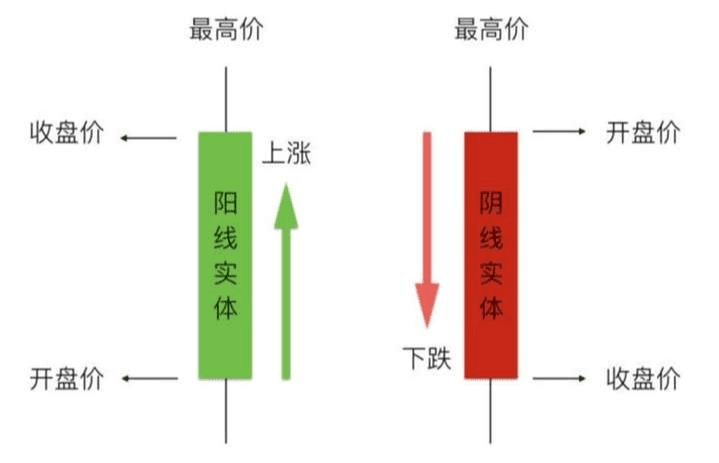
When the closing price is greater than the opening price, the body is green, indicating a price increase, referred to as a bullish candle.
When the closing price is lower than the opening price, the body is red, indicating a price drop, referred to as a bearish candle.
Most exchanges and analysis software in the cryptocurrency space show green for bullish candles and red for bearish candles. Generally, bullish candles represent the bulls (buying), and bearish candles represent the bears (selling). Whichever side is stronger will appear in the corresponding K-line. For example, if buying power today is greater than selling power, today's K-line in the daily chart will be bullish (green bar). Conversely, if a bearish candle (red bar) appears, it indicates stronger selling power.
Note: In the Chinese stock market, bullish candles are red, and bearish candles are green; in some charts, bullish candles may also be represented as solid bars, while bearish candles are hollow bars.
What is a shadow?
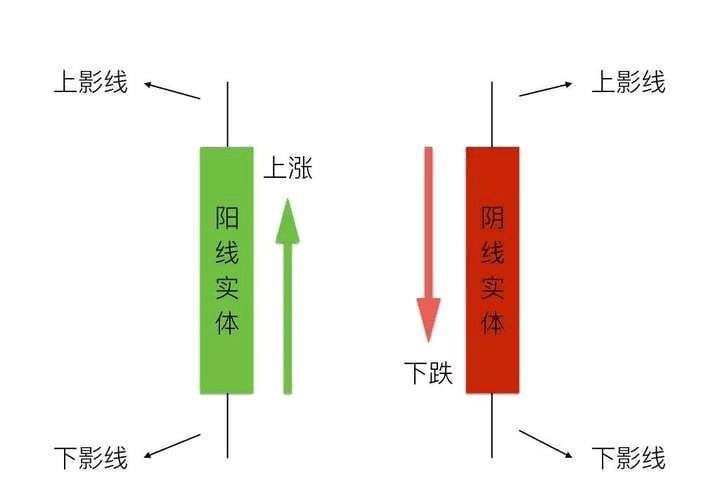
Shadows are the thin lines at the top and bottom of the bars, indicating the difference between the highest and lowest prices of the day and the closing price. The longer the shadow, the greater the resistance. A longer upper shadow indicates greater resistance to rising prices, while a longer lower shadow indicates greater resistance to falling prices. Regardless of whether it is a bearish or bullish candle, the straight lines protruding upwards from the body are referred to as upper shadows, while those protruding downwards are referred to as lower shadows.
What is the battle between bulls and bears?
Bulls and bears represent two factions; bulls represent the green army, and bears represent the red army. The two sides have different views: bulls believe prices will rise, while bears believe prices will fall. Hence, battles frequently occur. The bull green army consists of those who believe in rising prices, they buy to push prices up; the bear red army consists of those who believe in falling prices, they sell to push prices down.
In each time period, battles will occur. If the bear red army wins, prices will fall, and the K-line chart will display red. If the red side shows significant advantage, it indicates strength, and the body displayed on the K-line chart will be larger. Conversely, if the green side has weak resistance, it means they present little obstacle to the red side, resulting in very short shadows on the K-line chart.
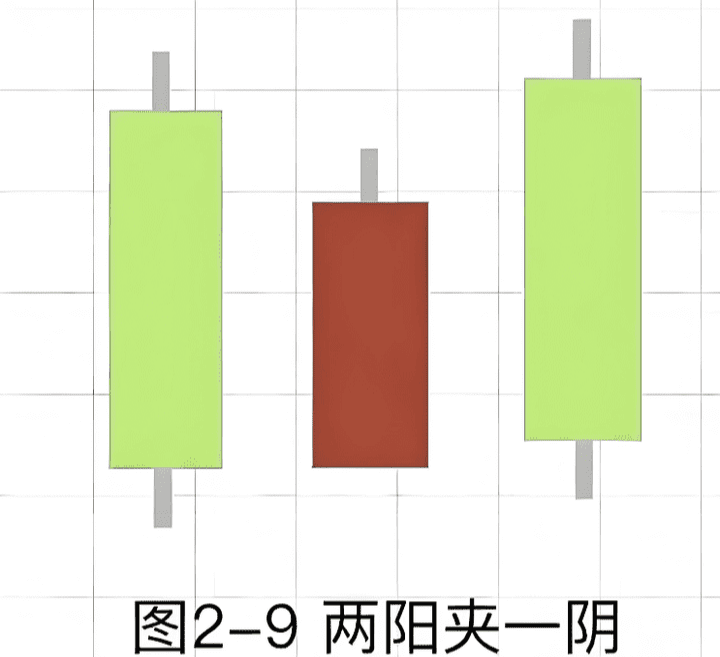
Common bearish K-line combinations
1. Evening Star
1. Technical characteristics
(1) Appears in an uptrend;
(2) Composed of three K-lines, the first is a bullish candle, the second is a small bearish candle, small bullish candle, or doji, and the third is a bearish candle; #US Crypto Week
(3) The third bearish candle's body penetrates into the body of the first bullish candle.
2. Technical meaning
The Evening Star is a top reversal signal, suggesting to sell, indicating a bearish outlook.
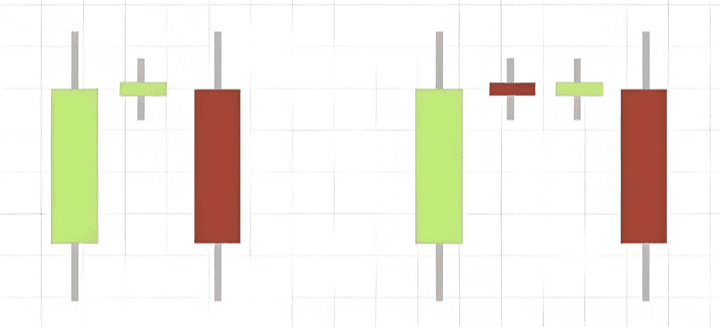
2. Cloud Cover
1. Technical characteristics
(1) Appears in an uptrend;
(2) Composed of one bullish and one bearish K-line; #Trading Strategy Pitfalls
(3) A large bullish candle appears first, followed by a large bearish candle that gaps up;
(4) The bearish candle's body penetrates below half of the bullish candle's body.
2. Technical meaning
Cloud Cover is a top signal indicating a bearish outlook.
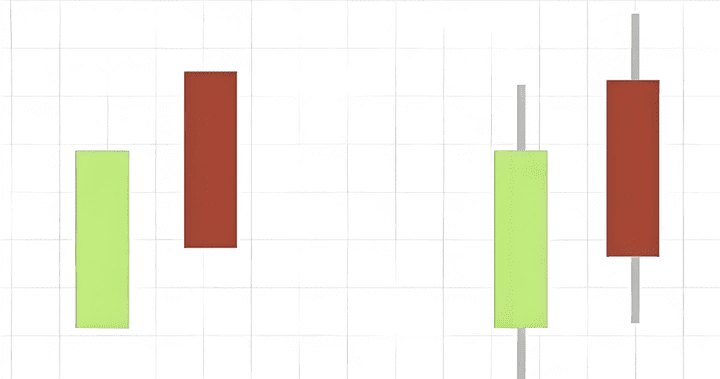
3. Dome
1. Technical characteristics
(1) Appears in an uptrend or sideways consolidation;
(2) First, a large bullish candle is formed, followed by several small bearish and bullish candles at its top, forming a rounded top;
2. Technical meaning
A dome is a top signal indicating a trend reversal and a bearish outlook.
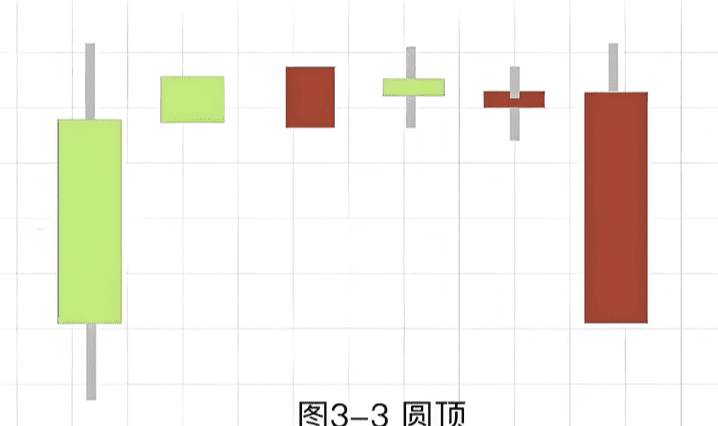
4. Three Black Crows
1. Technical characteristics
(1) Appears in an uptrend;
(2) Composed of three large bearish candles that open high.
2. Technical meaning: Three Black Crows is a top signal suggesting to sell, indicating a bearish outlook.
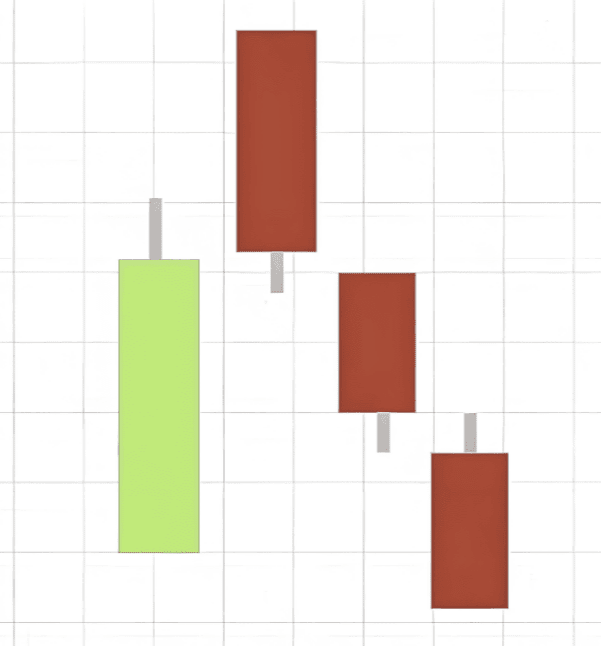
5. Continuous decline
1. Technical characteristics
(1) Appears during a decline;
(2) Many bearish candles are interspersed with a few small bullish candles;
(3) The entire K-line arrangement is sloping downwards.
2. Technical meaning: A continuous decline is not just a bearish signal; it is advisable to sell.
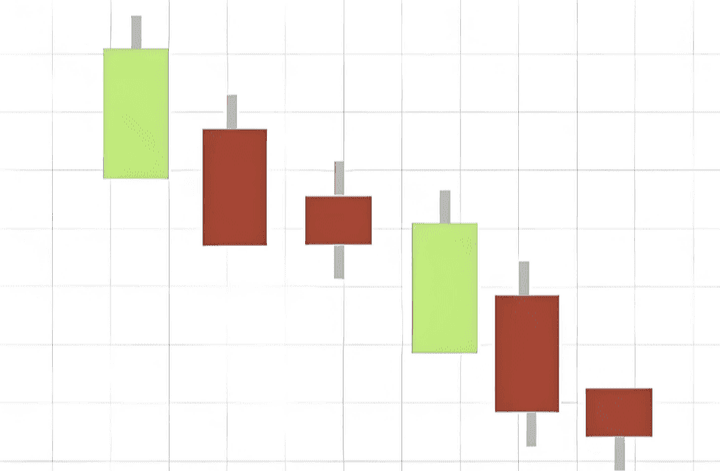
6. Bear Vanguard
1. Technical characteristics
(1) Appears in a downtrend;
(2) Composed of several K-lines;
(3) When a large bearish candle is formed, it leaves a long lower shadow;
(4) After the price rebounds, it soon falls below the lower shadow.
2. Technical meaning
The bear vanguard is a sell signal, indicating a bearish outlook.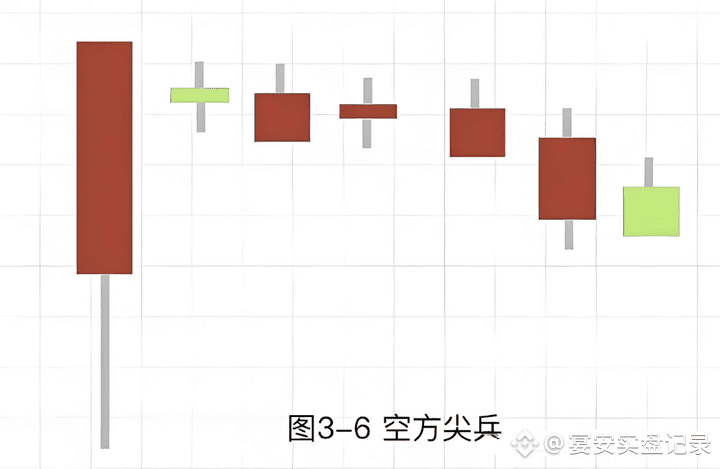
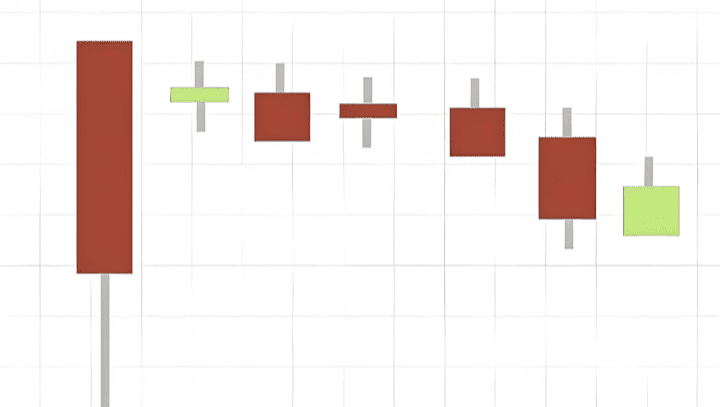
7. Two bear candles enclosing one bull candle
1. Technical characteristics
(1) It can appear in both uptrends and downtrends;
(2) Composed of two long bearish candles and one shorter bullish candle;
(3) A bullish candle is sandwiched between two bearish candles.
2. Technical meaning
(1) Appearing in a rising trend is a top signal; sell;
(2) A bearish engulfing pattern often occurs in a downtrend and rarely appears in an uptrend;
(3) Appears in a downtrend to indicate continued bearishness.
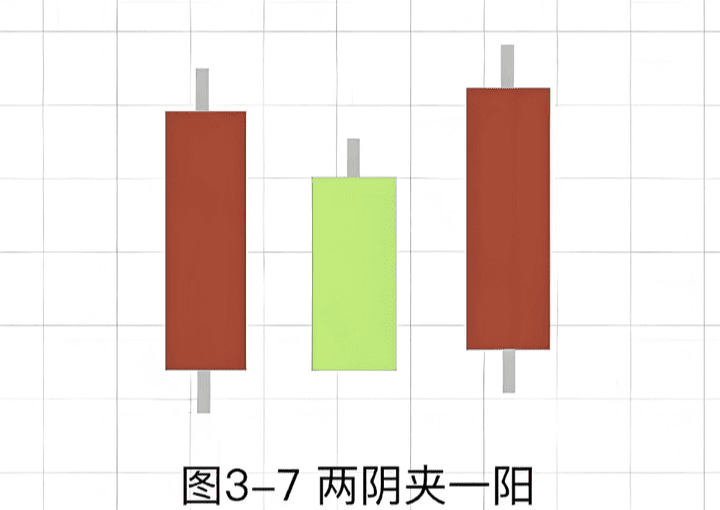
The martial arts secret manuals have been provided to everyone; whether you can become famous in the community depends on yourself.
Still the same: If you don't know what to do in a bull market, click on the old blog avatar, follow for spots planning, contract secrets, and free sharing.
